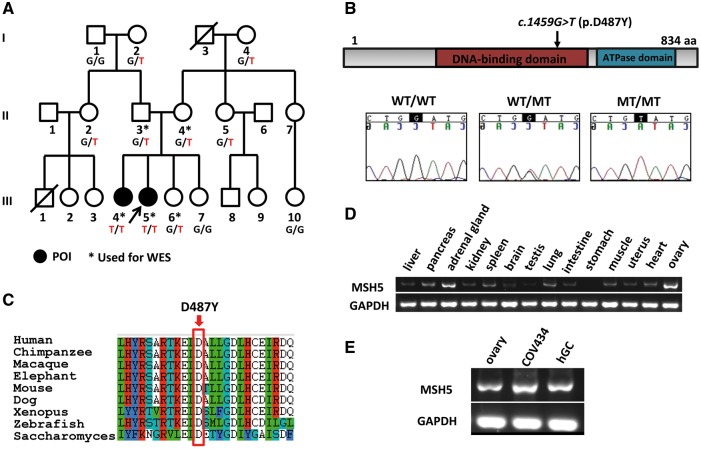Figure 1.
Pedigree of a family with two daughters afflicted by POI and homozygous MSH5 p.D487Y variant. (A) The pedigree of the index family, ascertained through III5. WES was performed on the family members labeled with asterisk, and those labeled with genotypes were available for Sanger sequencing. “T” denotes the mutant MSH5 allele, and “G” wild type. Arrow indicates the proband. (B) The location of p.D487Y variant is in the DNA-binding domain of MSH5, and the residue is conserved from saccharomyces to human (C). (D) shows the mRNA level of MSH5 in fetal tissues, which is significantly higher in ovary than others. (E) The RT-PCR in fetal ovary, human granulosa cells (hGCs, obtained from one patient receiving in vitro fertilization treatment) and COV434 cells, shows that MSH5 is also highly expressed in adult granulosa cells. MT, mutant; and WT, wild type.

